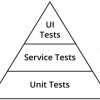Related Content
 |
A Musical Metaphor for Agile Estimation Many explanations of relative sizing in agile estimation fail to capture the mix of knowledge, skill, and effort involved in completing a task. Learning to play a song seems to capture the core ideas of estimation. With a metaphor, it is easier to come up with baselines to estimate against for your own agile sizing. |
|
 |
FDA’s New Digital Health Report To update health care providers, patients, and developers about some of the risks and benefits surrounding software products, the FDA released a report based on impact to patient safety, health benefits and risks, and best practices. |
|
 |
Who Should Be Doing Automation Work? Testers often look at automation work as the next career step after manual testing. Automation work has more visibility at the project level, and people who do this work usually also tend to have a little more social status. But Justin Rohrman makes a case for why testers shouldn't be the ones doing automation work. |
|
|
|
Agile Collaboration on Remote Teams The first value in the Agile Manifesto is “Individuals and interactions over processes and tools,” and for many teams, being located in the same place facilitates these interactions. However, being part of an effective, collaborative team is less about location than it is about motivation and good practices. |
|
 |
6 Signs Your Agile Project Isn’t Really Agile There's a trend of organizations declaring they are agile without actually changing how they develop software. Declaring that an apple is an orange doesn’t make it so. These six key indicators can help you determine whether your agile project isn’t really agile after all—and give you some solutions to help. |
|
 |
2018 Hour of Code: Let’s Dance What kid doesn’t love a dance party? With aliens and sharks that drop, double down, and dab? Introduce kids to the basics of computer science in a way that doesn’t elicit “I’m boooored” with Dance Party, the draw for the 2018 Hour of Code. Do a little dance, make a little code! |
|
 |
5 Reasons You Should Have More Unit Tests The test pyramid is a valuable visual in agile. In particular, it argues that unit tests should make up the majority of tests, and while agile teams recite this principle, it is often not clear why it is so important. Here are five reasons unit tests should make up the majority of tests written for an application. |
|
 |
Feature Branching Is Not Evil Some people believe branching and pull requests are inherently bad. True, branching done poorly can slow down a team, but advocating for avoiding branching altogether can lead you to ignore the more important goal of an agile process: rapid integration of changes. First, make sure you're considering the right metrics. |





